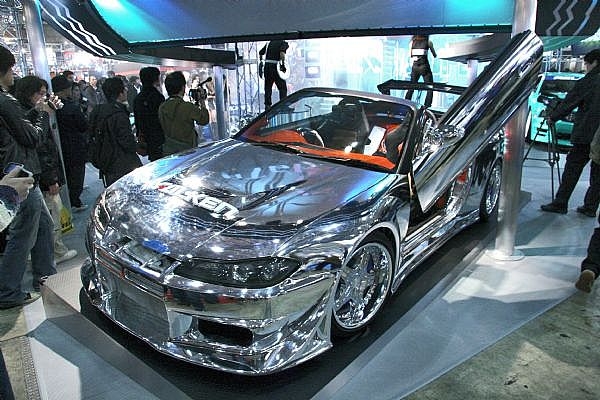
Whether you've just bought a new car from the manufacturer or want to fix up your old clunker, customization adds a personal touch that declares your style and personality. If you're in need of a hobby, or just want to show off your ride, vehicle modification might be right for you. Although customization is an expensive process, the rewards of personal satisfaction and the admiration of fellow drivers are well worth the work.
Fix the basics first. While dreams of thunderous stereo systems or candy paint float through your head, stop for a moment and be realistic. If you car has engine trouble, by all means, repair the motor before spending money on a radio. Of the same token, new rims on a car with a cracked windshield just look silly. Before showing off, get your car's standard equipment in good working order.
Avoid cheap imitations. Taking a shortcut to glory might lead to shame. There's a reason plastic "rims" and off-brand speakers cost less than the real thing--it's because they're not and people can tell. Why make your car look tacky by putting imitation parts alongside your quality components?
Decide on a theme that reflects your personality. Customizing a car is a lot like creating a fine work of art. If the job is done well, the artist's spirit and vision will shine through. Rather than just bolting on every component that you think looks cool, figure out a theme and stick with it. If you use complimentary colors like red and black or blue and silver, avoid parts that clash with your style.
Upgrade the rims. Unbelievably, changing a car's rims produces one of the most dramatic transformations of the customization process. Rims come in an assortment of sizes, styles and materials, giving you plenty of options for making a statement. Chrome is one of the nicest, but you can replicate its sheen at a lower cost by going with polished aluminum. Remember to match your vehicle's bolt pattern with that of the rims and consider low profile tires if your size is 18 inches or better.
Change the paint. Keep your theme in mind when you choose a paint scheme. Simple tasks include accenting side view mirrors and spoilers. Some designers cover the entire car with metallic or gold flakes mixed into the paint. If you have the money, consider candy paint that causes your car to change colors in different lighting.
Install a stereo system. Whether you want to wake your neighbors, compete at car shows, or simply blast your favorite album, a nice stereo system is a must for a custom car. Basic components include a CD player, subwoofers, and amplifiers. Again, the options are as complex as the installation schemes. Think art, power and advanced technology and you'll do just fine.
Customize the interior with dyes or paint. Make sure your internal theme matches or compliments that of your exterior. Replace factory upholstery with leather or plush fabric and color door panels, vents and trim to give the car a hint of distinction.
Tint the windows. Choose between shades of black, mirror, colored tint or a combination of each style. Unless you're an expert, don't attempt to do it yourself. Air bubbles or peeling edges take you back to Step 2.
Add vinyl decals or pin striping. Vinyl comes in multiple colors and can be cut into virtually any shape imaginable. If you've created a crazy design you'd like to plant on your hood or want barbed wire flames racing down your car's sides, these stickers can provide the effect you crave. Fortunately, professional vinyl installation is relatively inexpensive, depending upon the size of the decal.
Accent your car with interior/exterior illumination. The final and most eye-catching trick for customizing your ride is installing light effects. Neons are common, but your best bet is to go with LED's. They use much less energy, are brighter and can flash in multiple colors and patterns.